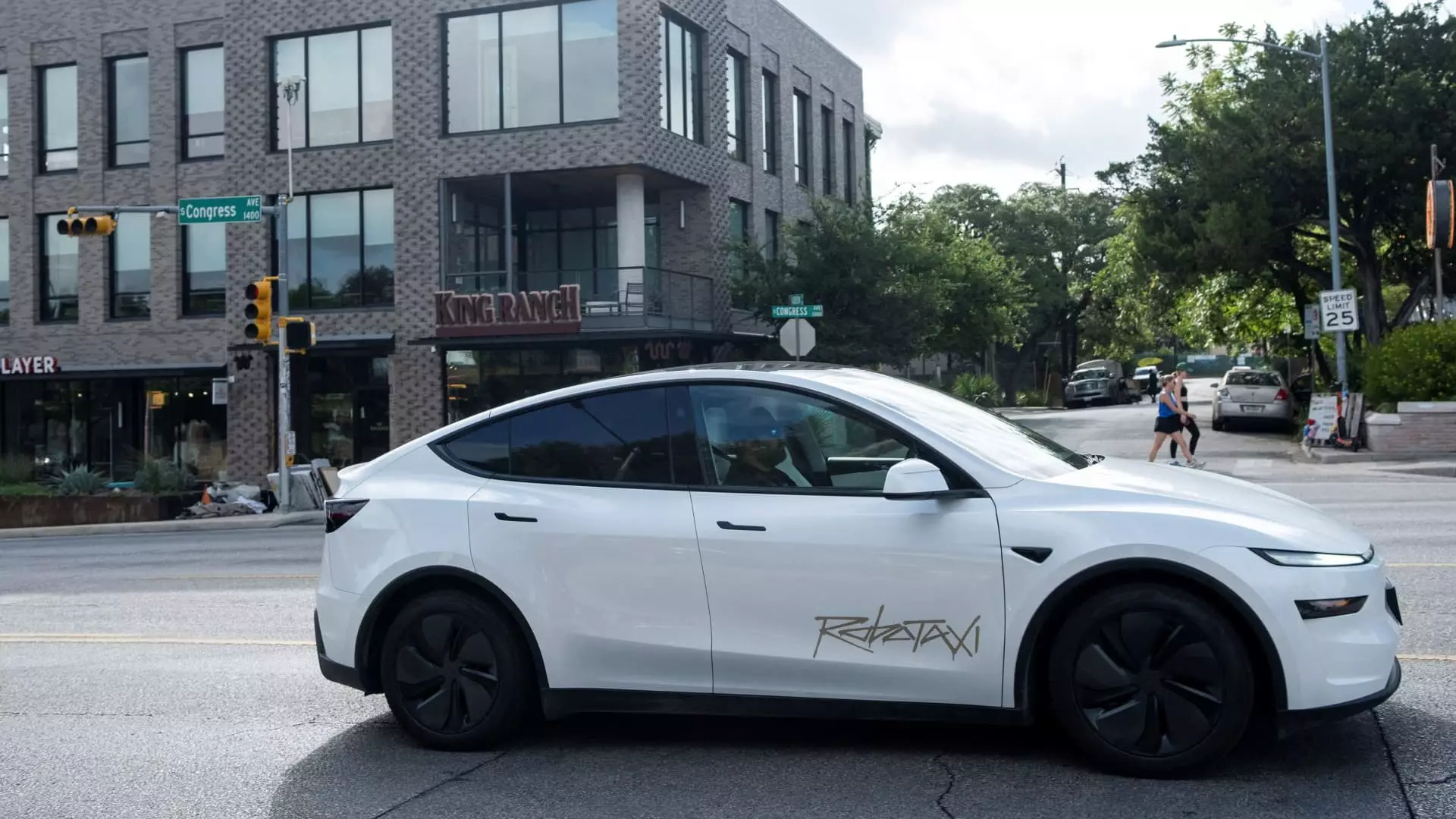In an era where technological advancements promise to revolutionize transportation, Tesla’s foray into robotaxi services has been met with an unsettling reality that stands in stark contrast to Elon Musk’s ambitious dreams. The recent debut of autonomous Tesla Model Y SUVs in Austin, Texas, has sparked a wave of scrutiny after an avalanche of social media videos captured the vehicles’ erratic behavior on public roadways. From one car driving the wrong way to another abruptly stopping amidst traffic, these incidents raise fundamental questions about safety, oversight, and the future of autonomous vehicles.
The Regulatory Reckoning: Are We Prepared for Autonomy?
The National Highway Traffic Safety Administration (NHTSA) is not one to shy away from intervening when public safety is at stake. Recently, the agency reached out to Tesla following these alarming reports. Yet, one can’t help but notice the lack of preemptive regulatory measures. The NHTSA claims it does not pre-approve new technologies, placing the onus on manufacturers to ensure their products meet safety standards. This hands-off approach appears reckless in light of Tesla’s ongoing safety probes and the chaotic incidents now coming to light.
In truth, while innovation should be encouraged, it must come with adequate checks and balances. Why has the industry been allowed to pivot into uncharted territories without more stringent regulations? It may bolster the façade of tech progress, but this recklessness could lead to devastating consequences. The chaotic performance of these robotaxis indicates that hasty advancement—without exhaustive trials and regulatory oversight—poses a looming danger to not only passengers but all road users.
Elon Musk: The Visionary or the Over-Promiser?
While Musk’s vision for a fully autonomous fleet paints a captivating picture of the future, the reality remains obstinately far from his promises. Since 2015, he has consistently predicted timelines that strangely seem to stretch and warp with each passing year. At one point, he asserted that Tesla would achieve full autonomy by 2018—a bold claim that is now almost laughable in hindsight. Each missed deadline not only undermines the credibility of Tesla but casts shadows over Musk’s persona as a transformative innovator.
It is clear that Musk’s overcommitment to ambitious timelines risks straining consumers’ faith in the product. The latest rollout—limited to a small cohort of enthusiastic Tesla supporters—begs the question of whether the company is more focused on promoting its brand than ensuring the viability and safety of its technology. Critics of Musk’s ambition might argue that the vision of a robotaxi-driven future is being tarnished by unfulfilled promises that create skepticism amidst what should be excitement.
Competitors Setting the Pace: A Warning Signal for Tesla
As Tesla flounders in an environment it helped to cultivate, competitors are charging ahead with their own autonomous vehicle services. Notably, Waymo recently announced it surpassed 10 million paid trips with its fleet, while rivals in China, including Baidu’s Apollo Go, are making significant strides in commercial robotaxi operations. The race is on, and Tesla seems to be lagging behind amidst its self-imposed bottlenecks of expectations.
This alarming trend should serve as a wake-up call for Tesla and its supporters; innovation alone is not sufficient for success in such a cutthroat market, and failing to deliver can lead to losing both market share and consumer loyalty. While Tesla continues to occupy a notable place in the EV market, its seemingly stagnant robotaxi initiatives signal that the company must recalibrate its strategy to stay relevant.
The incidents in Austin serve as a cautionary tale about unbridled technological ambition. The intersection of innovation and regulation offers critical lessons for Tesla and the broader tech landscape. As we stand on the precipice of a new transportation era, it is essential that we ensure safety takes precedence over spectacle.

